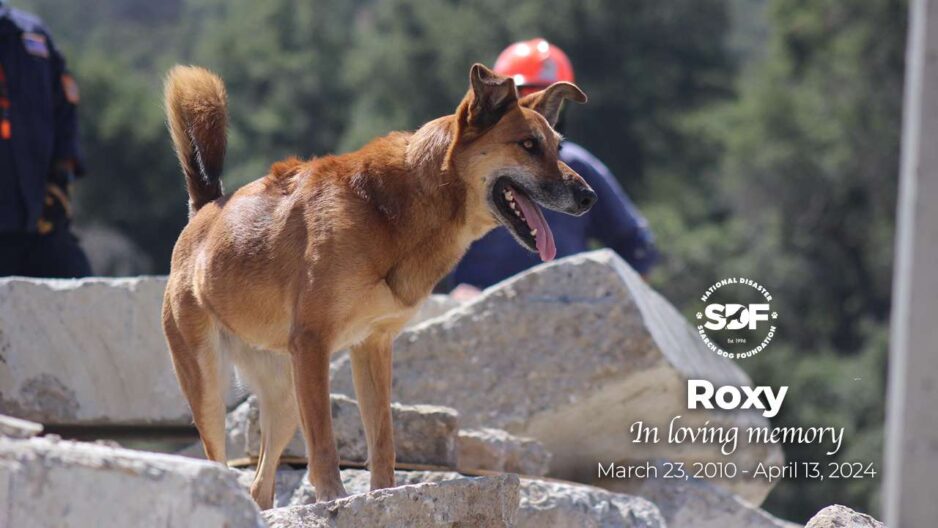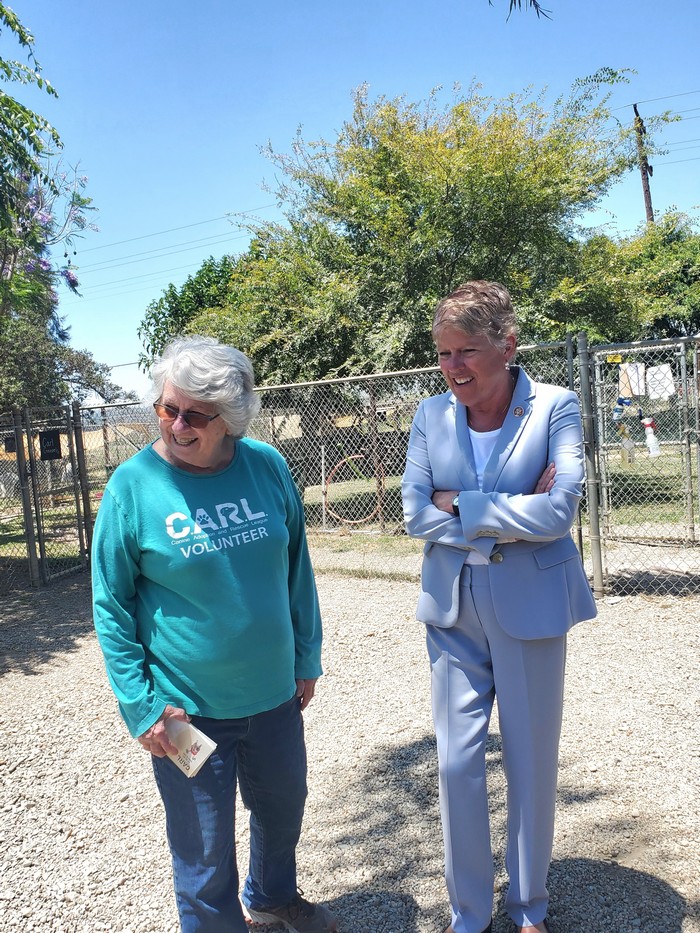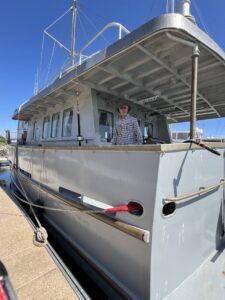In March 2012, a cheerful mutt named Diva was surrendered to the Sacramento SPCA by an owner who felt they couldn’t provide the active home she needed. Initially taken in as a stray, Diva had been causing a fuss by chasing chickens at her previous home. Recognizing her potential, the Sacramento SPCA staff, who had a professional relationship with the Search Dog Foundation (SDF), contacted SDF volunteer Andrea Bergquist.
Andrea, the wife of SDF handler and Sacramento City firefighter Chris Bergquist, felt Diva showed promising qualities. After passing her medical exam, Diva was transported south to begin SDF’s training program. SDF trainer Kellee Matthews quickly noted Diva’s good focus, natural ability on rubble, and strong nose. Renamed Roxy, she impressed the trainers with her instincts and skills.
On November 5, 2012, Roxy graduated from the canine training program and was partnered with Cynthia Sato, a U.S. Forest Service veteran and firefighter/paramedic with the Los Angeles Fire Department. Cynthia and Roxy joined a dedicated group of Los Angeles-based teams, training regularly to prepare for the FEMA Certification Exam, which they passed on September 21, 2013. This certification allowed them to deploy nationwide with California Task Force 1.
Their first deployment came on July 25, 2014, following a structural collapse in Century City, CA. A large planter had fallen from a crane onto a parking structure. Unsure if anyone was trapped in their cars, first responders called for assistance. Roxy and Cynthia, along with teammates Mike Gross and his canine Journey, searched the site. Roxy worked the lower levels and crawl spaces, while Journey searched the upper levels. Fortunately, no victims were found, and all residents and employees were accounted for.
To maintain active deployment status, teams must re-certify every three years. On June 5, 2016, Cynthia and Roxy re-certified in Littleton, MA. They responded to their next call on January 30, 2017, in the Hollywood Hills after heavy rains caused a landslide, trapping occupants in their homes. Roxy and Cynthia, along with another LAFD canine team, searched for unaccounted residents.
In January 2018, Roxy and Cynthia were deployed to Montecito, CA, to search for survivors following a deadly mudslide. They spent nearly a week searching the devastated area, completing this challenging deployment together.
On New Year’s Day 2022, Roxy retired from the L.A. Fire Department and California Task Force 1. She remained a beloved member of Cynthia’s family, enjoying an active lifestyle and being a dedicated big sister to Cynthia’s young son.
At the age of 14, Roxy peacefully crossed the Rainbow Bridge on April 13, 2024. We are grateful for Roxy’s service to her community and the nation, and she will be fondly remembered for many years. Like all our four-legged heroes, Roxy will be honored at SDF’s Canine Memorial Wall in Santa Paula, CA.










